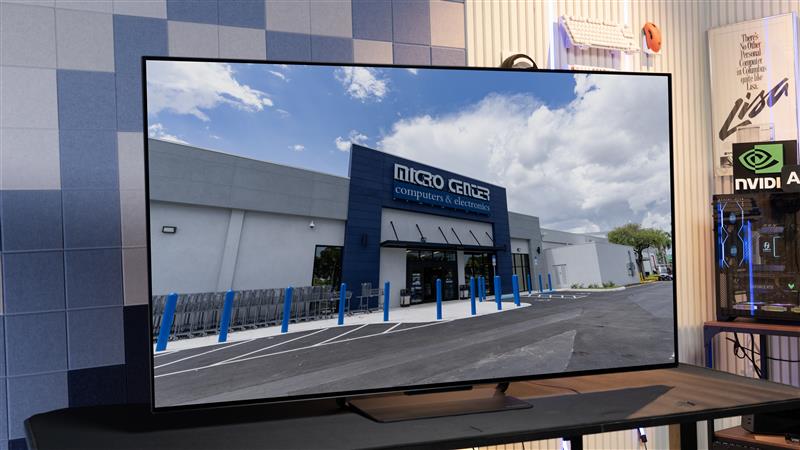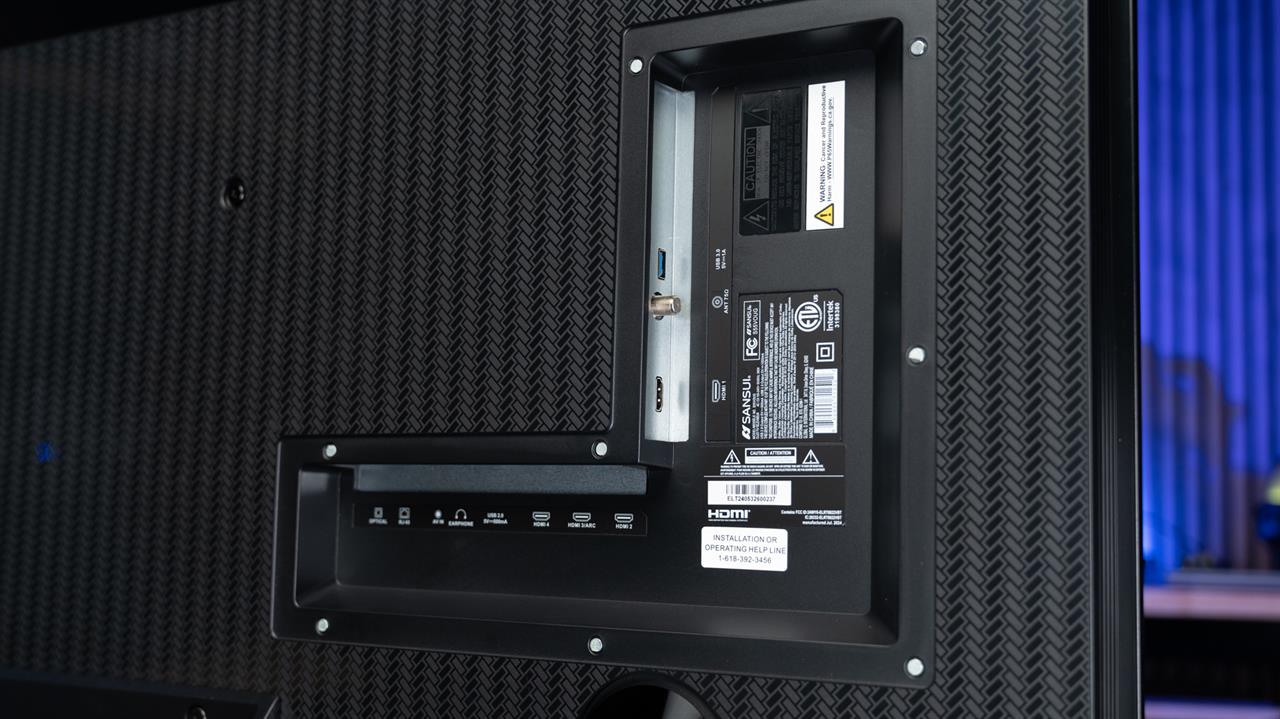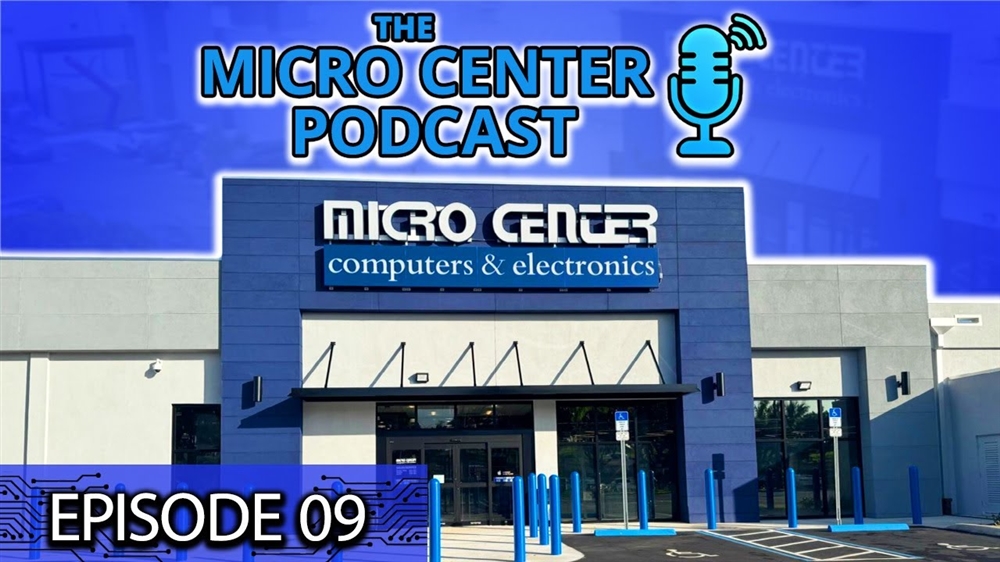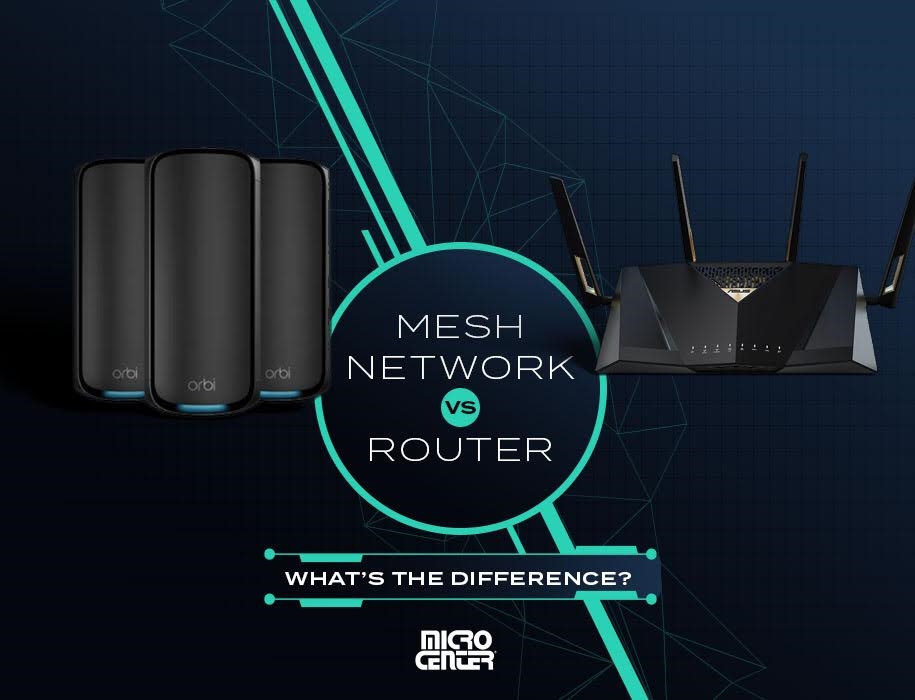Hands-On with the $699 Sansui S55VOUG 55-inch OLED TV
Micro Center is one of the only places you'll find this incredibly inexpensive 4K OLED TV.Reviews

Editor's note: Since we published this hands-on preview, the price of the Sansui S55VOUG has dropped to $699.
If you were shopping for a new TV, and not worried about the price, you would 100% get an OLED TV. It's the best mainstream consumer TV tech right now, with great picture quality, great black levels, and colors that really pop. But OLED TVs are traditionally expensive. They're less than they used to be, but you'll still typically pay about $1,200 for a 55-inch.
That's why I was excited to see this new 55-inch OLED from Sansui on sale for $699 (originally $799 before holiday sales). I got a chance to check out the Sansui S55VOUG in the Micro Center video studio and spend some time going through its features.
Specs and features
The Sansui has a 4K screen, as you'd expect from almost any new TV these days, with 3,840 x 2,160 resolution. It's also a 120Hz screen, which means it can refresh its image up to 120 times per second. (The first OLED TV I ever bought, back in 2017, cost more than three times what this does, and was only a 60Hz TV.)
It supports VRR, or variable refresh rate, so it can match the frame rate of content like games, and there's a low-latency mode for gaming, which is another important feature to have. The set also supports HDR content though Dolby Vision, and Dolby Atmos for better surround sound -- and services like Netflix, Disney+, and Amazon Prime all offer plenty of HDR and Atmos content.
The built-in smart TV software is the Google TV platform, and there's a special karaoke mode which removes the vocals from YouTube music videos.
Around the back, the rear connections panel has four HDMI inputs, two are HDMI 2.1, and one supports eARC. That means you can hook up a Roku or Apple TV set top box, a PS5, a Xbox Series X, and even a gaming or media PC. (That's actually my current TV setup.) Plus there's an ethernet jack, a coax cable input, audio line out and digital audio input, for hooking up external speakers.

Photo: Jacob Bobo
Why OLED?
Why is OLED so important? It stands for organic light emitting diode. Unlike traditional LCDs, OLED TVs don’t need a backlight. Each pixel lights up independently, which means each pixel can turn off individually, which is how you get such perfect blacks.
OLED screens exceptionally have wide viewing angles, which means they look good from the side, unlike some LCDs, which can get washed out when viewed off-axis. They can also draw less power than other types of screens, and can be thinner and lighter, because you don't need that backlight.
Interestingly, this TV uses an LG OLED panel. In fact, most OLEDs, including models from Sony, Vizio, Hisense and Panasonic, all use LG OLED panels. So if they're built using the same OLED panel, what makes something like the high-end LG OLED C series (my current TV) so much more expensive?
Premium-priced OLED TVs can include custom chips for superior image post-processing and upscaling, better color calibration, more powerful built-in speakers and metal finishes instead of plastic.
Investing in your TV ecosystem
For $699, this is great on its own. But it's so inexpensive, you could have enough left over for some add-ons I'd recommend, such as a dedicated set-top box like an Apple TV or a Roku streaming stick, and a soundbar-subwoofer combo, and still cost less than the next-cheapest 55-inch OLED.
Of course, with TV shopping I always say you should go and see the seat in-person first, which is why you can head over to your nearest Micro Center and check it out in person.
Read more: TV and media resources
- See top-rated TVs at Micro Center
- See top-rated OLED TVs at Micro Center
- See top-rated home theater speakers at Micro Center
- See top-rated streaming devices at Micro Center
Micro Center Editor-in-Chief Dan Ackerman is a veteran tech reporter and has served as Editor-in-Chief of Gizmodo and Editorial Director at CNET. He's been testing and reviewing laptops and other consumer tech for almost 20 years and is the author of The Tetris Effect, a Cold War history of the world's most influential video game. Contact Dan at dackerman@microcenter.com.
Comment on This Post
See More Blog Categories
Recent Posts
The End is Coming for Windows 10: What You (Still) Need to Know
With the official end-of-support date for the world's most popular PC operating system fast approaching, here's how to keep your PC secure and decide if it's finally time for an upgrade.
Continue Reading About The End is Coming for Windows 10: What You (Still) Need to KnowMesh Network vs. Router: What’s the Difference?
Are you fed up with Wi-Fi dead zones and spotty connections? In this guide, we’ll pit traditional routers against mesh networks to show you which solution delivers seamless, high-speed coverage tailored to your home, devices, and budget—without breaking the bank.
Continue Reading About Mesh Network vs. Router: What’s the Difference?









